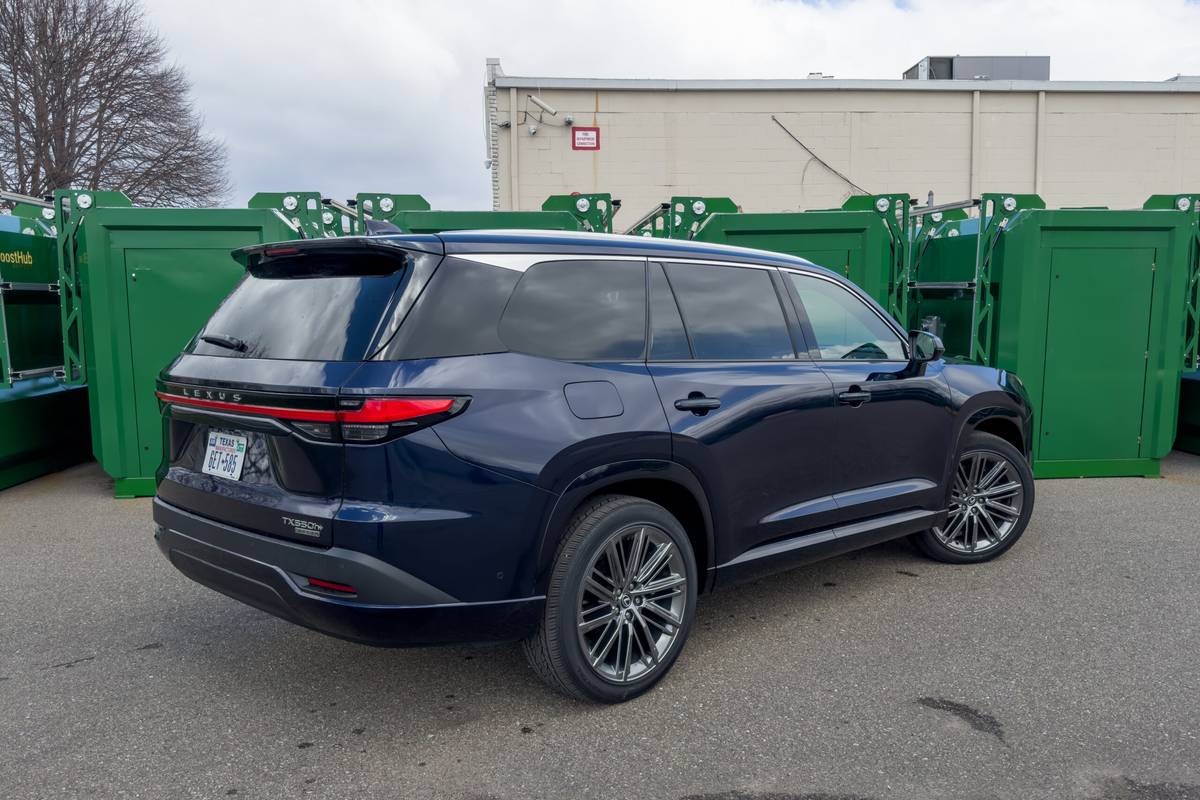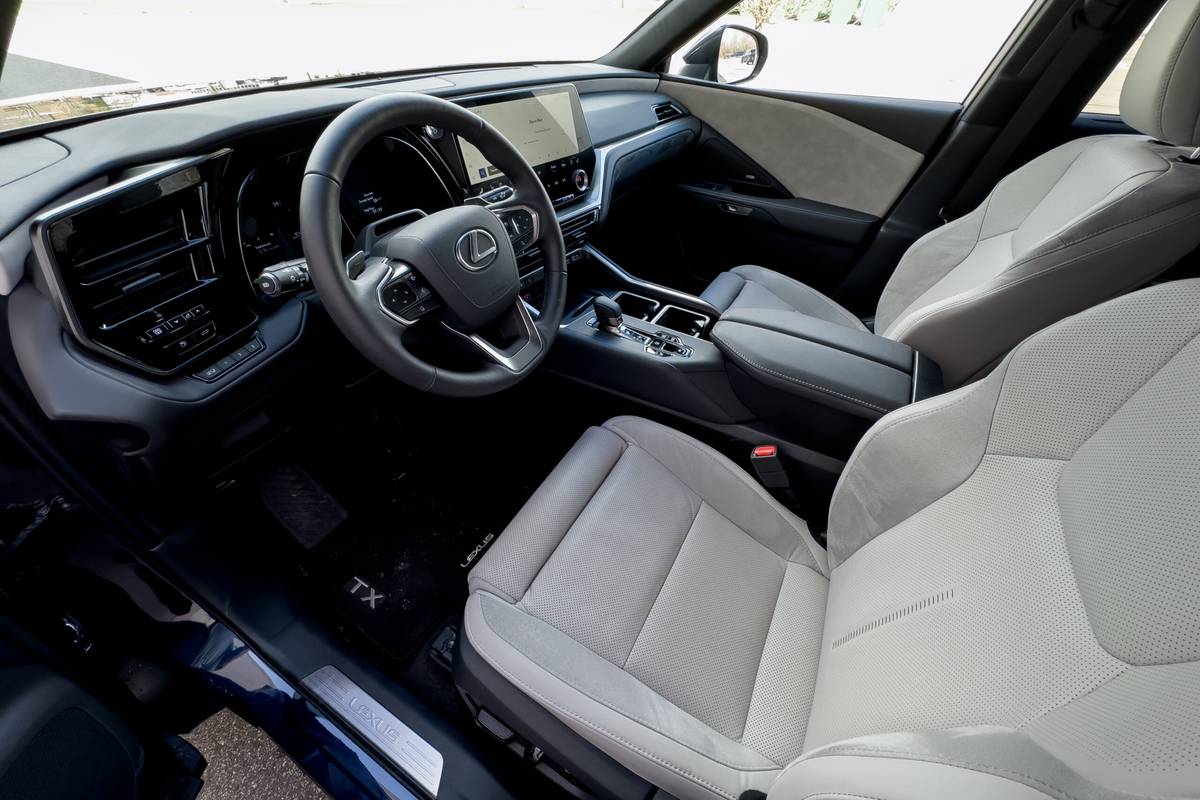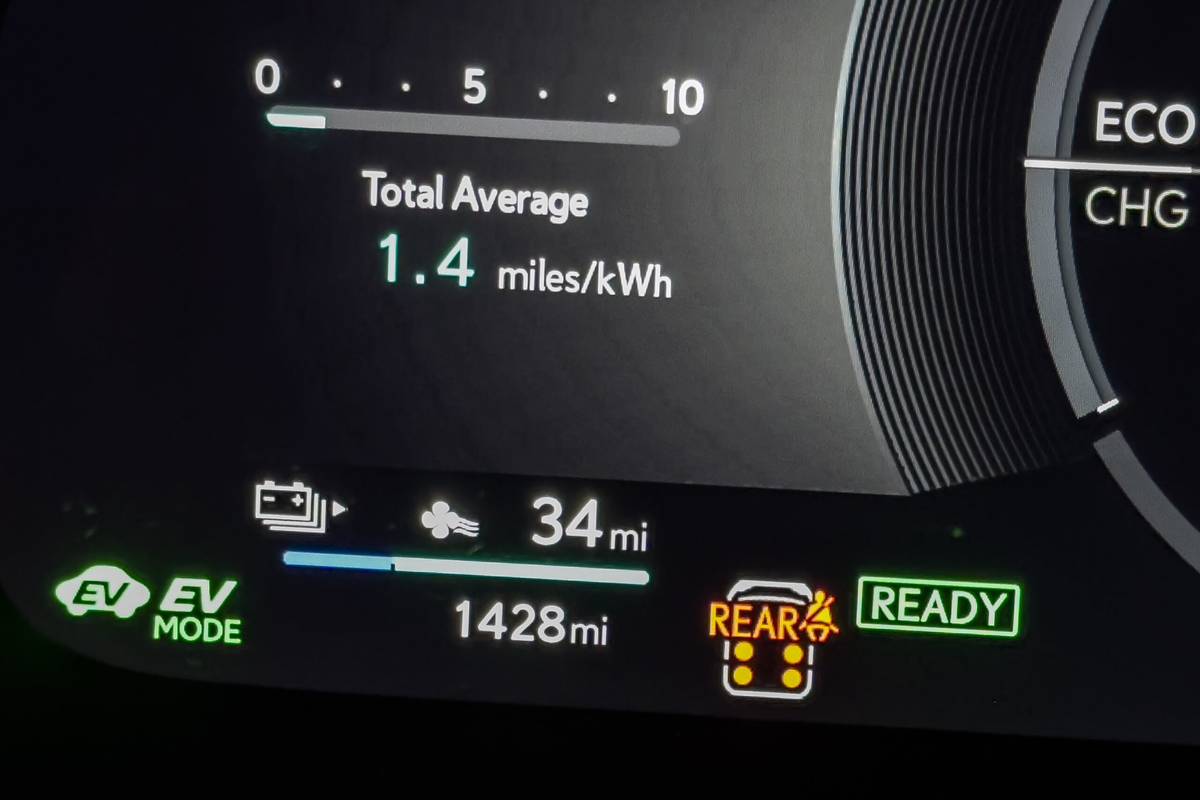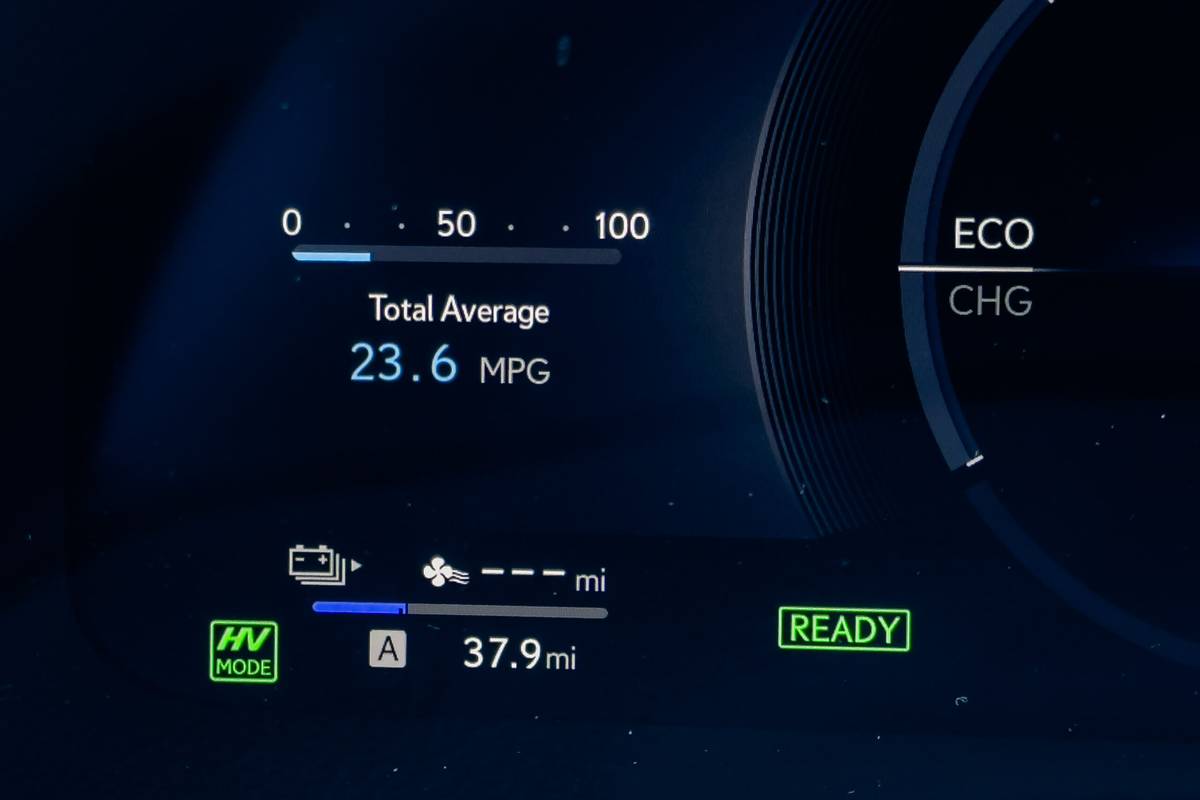
There’s something new in Lexus showrooms this year, a model the luxury brand has never had before: a big front- or all-wheel-drive three-row crossover-style SUV, a true family truckster with an “L” badge. Based off the Toyota Grand Highlander’s underbits but fancied up significantly to turn it into a Lexus (Toyota is the parent company that owns the Lexus brand, if ya didn’t know), the TX line represents a much more usable three-row crossover-style SUV than the stopgap attempt that was the Lexus RX-L. The GX and LX SUVs also have three rows of seats, but being more traditional truck-style SUVs, their third-row room is much more compromised. Not so with the new TX.
Related: 2024 Lexus TX Review: Everything’s Bigger in TX … But Not Necessarily Better
There are a few versions of the new 2024 TX, as well, starting with the TX 350 and its 275-horsepower, turbocharged 2.4-liter four-cylinder engine mated to an eight-speed automatic transmission, available in FWD or AWD. Then there’s the TX 500h with its 366-hp hybrid powertrain that combines the turbocharged gasoline four-cylinder with an electric motor, six-speed automatic transmission and standard AWD. But the late arrival of the line-topping TX 550h+ plug-in hybrid is what we’re interested in here, with its 404-hp hybrid powertrain that combines a 3.5-liter V-6 engine with a continuously variable automatic transmission and AWD. The 550h+ has an 18.1-kilowatt-hour lithium-ion battery pack that allows a driver to go a Lexus-estimated 33 miles on electric power alone before the gasoline engine kicks in to keep you going until the fuel runs out. If you plug the TX 550h+ into a Level 2 240-volt plug, it’ll recharge its battery in about three hours using a 6.6-kilowatt onboard charger.
We wanted to figure out if the PHEV version of the TX could achieve that 33 miles of range — or if it could do better than that. In our experience, most PHEVs can achieve better than their stated EV range if driven properly, and we had no reason to believe that the TX couldn’t do the same. So on a fine spring day in southeast Michigan, that’s exactly what we attempted.
The Ride
The TX shares its structure with a bunch of other Toyota corporate vehicles, including the Lexus RX and NX SUVs, but it’s perhaps most closely related to the Grand Highlander, the new-for-2023 large mid-size SUV featuring three usable rows of seats for full-sized adults. The TX also shares two powertrains with the Grand Highlander, as both the base turbocharged four-cylinder and mid-level hybrid system can also be had in the Toyota, but the PHEV version that combines the V-6 and Toyota’s corporate hybrid drive system is exclusive to the TX (for now, anyway). It’s only available in the Luxury trim level (lesser TX models come in base, Premium, Luxury and F-Sport Performance, depending on powertrain).
What we had to test is a 2024 TX 550h+ Luxury AWD plug-in hybrid resplendent in truly lovely Nightfall Mica metallic blue paint and loaded with every bell and whistle available. What that translates to is that it’s expensive as hell: The as-tested price came to $82,619 (including destination), an eye-popping sum for what unfortunately is a vehicle not much nicer inside than the Grand Highlander on which it’s based. Make no mistake: It drives beautifully, with plenty of power, a quiet and refined ride, comfortable seats and excellent utility. But luxurious materials quality is decidedly lacking for a vehicle this expensive, and it feels much more Toyota than Lexus. It’s a lovely, excellent $50,000 SUV — but it’s decidedly underwhelming as an $80,000 SUV.
The TX provides you some hybrid information on dedicated pages through the Lexus multimedia system, but there are some quirks — such as no setting to adjust regenerative braking, something that Toyota PHEVs feature but apparently Lexus PHEVs do not. But there is a dedicated EV mode, an automatic EV/HV (hybrid) mode and even a charging mode if your battery is sufficiently low and you want to give it a boost while driving around town. PHEVs are at their most efficient when driven in urban settings, where energy can be recaptured during stop-and-go driving; they’re at their least efficient during high-speed freeway cruising, where wind resistance drains batteries pretty quickly. Keeping a PHEV in its gasoline mode or automatic mode might make the most sense on the highway, allowing for maximum EV-only operation around town, where it’s most efficient. This time, we wanted to see how far the TX 550h+ would go if fully fueled, fully charged and kept in EV operation for as long as possible. Lexus says 33 miles; let’s see if it’s right.
The Route
The PHEV electric range testing route I use runs from Ann Arbor, Mich., east to Dearborn, Mich., just on the outskirts of Detroit, using surface streets and divided four-lane boulevards. Speed limits are no more than 55 mph, and the route combines a good mix of stop-and-go urban driving with higher speed suburban travel. The ambient temperature for this test was in the mid-40s, and the weather was sunny with very calm winds. While driving, I kept speeds to within 5 mph of the posted limit, accelerated normally (not hypermiling with super slow acceleration) and didn’t use either climate control or cruise control, both of which can affect whether or not the gas engine will fire up. So how did the TX 550h+ do?
The Results
Lexus estimates the 2024 TX 550h+ has up to 33 miles of all-electric range before the gas engine kicks in to keep things going — and in my test, it delivered 37.9 miles of EV-only driving before the gas engine kicked in, a nearly 15% boost over the rated range. It’s not a crazy huge result, but it is indicative of Lexus providing a realistic projection of the TX 550h+’s electric-driving capability, one that average consumers can achieve. Given the old adage of most EV drivers needing only about 20 miles of range to get to or from work, one could theoretically do nearly all of a suburban commute under electric-only power, charging up at home overnight if the owner plugs in daily. Once the electric battery is drained (and know that it’s never truly fully drained, it always keeps some in reserve to allow for EV operation in hybrid mode, as well), the TX 550h+ is still efficient as a hybrid, rated at 28/29/28 mpg city/highway/combined. For a big three-row SUV, those are pretty good numbers.
The problem, however, is that unless you keep your daily trips to less than 33 (or maybe 37) miles and generally operate without gasoline for the vast majority of your use of a TX 550h+, it’s going to take you a long time to recover the price premium to go from a regular hybrid TX 500h to the 550h+. The 550h+ is $8,700 more expensive than a base TX 500h F Sport Performance Premium AWD model, which is EPA rated at 27/28/27 mpg. It’s likely better to focus on whether or not your use case for the TX 550h+ fits with the vehicle’s abilities. If you drive less than 40 miles a day and plan to plug it in daily, it’ll work fine and can operate gas-free for long stretches of time. It’s also lovely to use while it’s doing so in terms of how it drives and performs, though not necessarily for how it feels as a luxury vehicle. For some folks, however, just having a partially electric three-row SUV with a Lexus badge on the grille is more than sufficient reason to consider one.
More From Cars.com:
- Is the 2024 Lexus TX a Good SUV? 5 Pros, 3 Cons
- 2024 Lexus TX: An Admission That Putting a Third Row in the RX Wasn’t the Best Idea
- Up Close With the 2024 Toyota Grand Highlander: Grander in Every Way
- Is the 2023 Lexus RZ 450e a Good Electric Car? 5 Pros and 4 Cons
- Everything’s Bigger in Lexus: Brand Teases All-New TX SUV
Cars.com’s Editorial department is your source for automotive news and reviews. In line with Cars.com’s long-standing ethics policy, editors and reviewers don’t accept gifts or free trips from automakers. The Editorial department is independent of Cars.com’s advertising, sales and sponsored content departments.
























